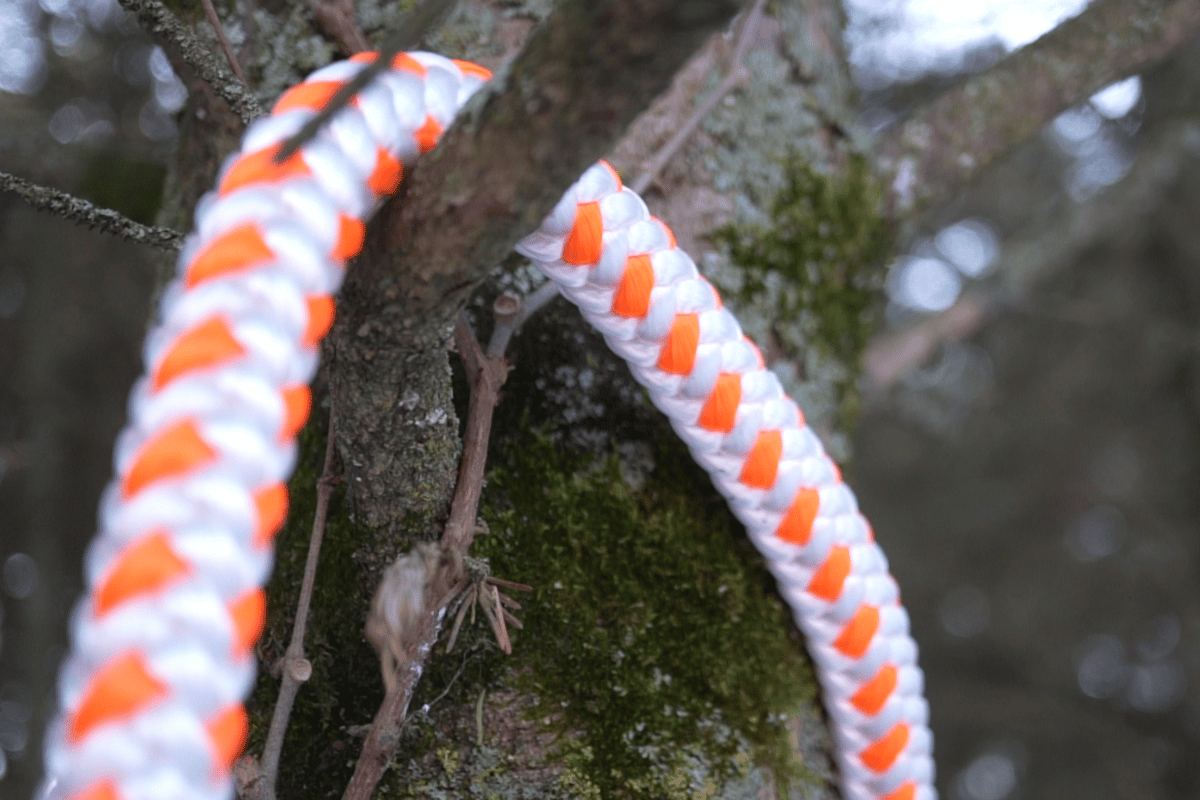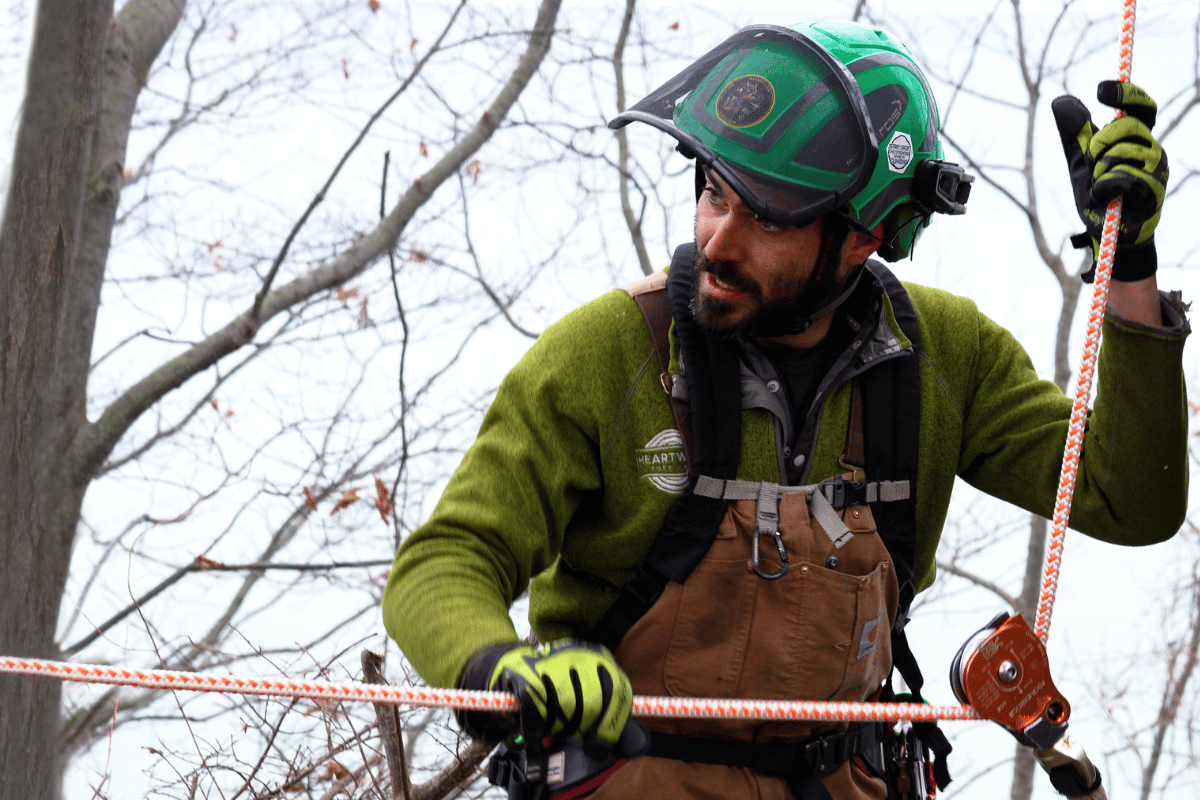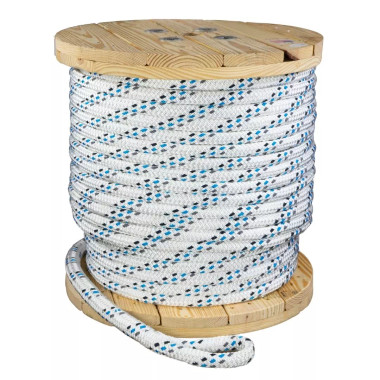Simple Tree Rigging Tips and Tricks For Arborists of All Levels
Estimated 0 min read
Tree rigging is an essential skill for any arborist, whether you're a seasoned professional or just starting out. The right rigging techniques can make the difference between a smooth job and a dangerous one. But no matter your experience level, mastering the basics of tree rigging is crucial for your safety, the safety of others, and the efficiency of your work.
In this blog, we’ll break down the fundamental tree rigging tips and tricks that arborists of all levels can use to improve safety and efficiency on the job. From understanding the best rigging setups to choosing the Right Rope for the task, these straightforward techniques will help you handle tree limbs with confidence and ease. Let's dive into the key elements of successful tree rigging.
Why Tree Rigging Is Essential
Before we get into the nitty-gritty of rigging techniques, let’s remind ourselves why this is such an important skill. Rigging allows arborists to safely control the fall of branches or whole limbs, reducing the risk of injury to workers, property damage, and accidents with power lines. Simply cutting a branch and letting it fall uncontrolled is a recipe for disaster—it can hit workers, damage surrounding structures, or swing unpredictably, leading to even more dangerous situations.
Rigging ensures that the load is carefully managed throughout the job, giving arborists control over the fall and landing of cut pieces. It’s also an important skill for reducing wear and tear on your gear and extending the life of your rigging equipment.
Things to Consider Before Setting Up Your Rigging System
Before you jump into rigging, take a moment to assess the job site and plan accordingly. Here are some things you should always keep in mind when setting up your rigging system:
1. Choosing the Right Anchor Point
The anchor point is the place in the tree where you’ll mount your rigging block or pulley. This is the starting point for your rigging system, so it’s vital to choose a strong, healthy branch that can support the weight of the cut limbs. Avoid using branches with obvious defects, like rot or cracks, which could jeopardize the strength of your system.
In some cases, if the branch you’re using as the anchor isn’t strong enough, you may need to use a backup anchor point or install additional rigging blocks to distribute the load.
2. Check the Tree’s Health and Stability
Inspect the tree’s overall stability before setting up any rigging. Look for signs of weakness, such as decay, cracking, or leaning. You don’t want to rely on a rigging setup that is vulnerable due to the health of the tree or branch you’re working with.
Keep in mind that the strength of the tree and its branches will affect the performance of your rigging system. Always err on the side of caution and seek guidance from an experienced arborist if you're unsure about a tree's structural integrity.
3. Test Your System with Smaller Cuts
Never jump straight into a big job without testing your rigging setup first. Start with smaller cuts to evaluate how well your system is working and check for any issues before you tackle heavier branches. Testing with 50% of the expected load gives you the chance to adjust your rigging and ensure everything is secure before proceeding.

The Right Rope Makes All the Difference
Rope is a critical component of your rigging system. The strength and flexibility of the rope you use will directly impact the safety and efficiency of the job. For example, a rope like our 5/8″ TREEBLITZ Arborist (pictured above) offers a breaking strength of 12,400 lbs and Safe Working Load Limit of 1033 - 2480 lbs, making it perfect for handling heavy limbs with ease. Before choosing your rope, make sure it’s strong enough for the task at hand, whether you’re cutting light branches or massive limbs.
Types of Rope to Consider
- Polyester Jacket and Nylon Core: These synthetic fibers are excellent choices for arborist rigging because they are strong, durable, and resistant to wear and tear. Polyester resists abrasion, extending the life of your rope, while the nylon core adds strength and the ability to absorb the shock of a falling branch.
- Polyester Jacket and Polyolefin Core: Lower strength but still with a very high breaking strength and overall durability. This is the composition of our 3 Strand Arborist Bull Rope—a great and economical choice.
- Ultra High Molecular Weight Polyethylene (UHMWPE): Strongest of all ropes out there per weight. Less stretch than other ropes, and a higher price tag.
Positive vs. Negative Rigging
When it comes to tree rigging, there are two main techniques: positive rigging and negative rigging. Both have their pros and cons, but positive rigging is generally the preferred method.
Positive Rigging
In positive rigging, the anchor point (usually a rigging block or pulley) is mounted above the load. This setup allows you to apply tension to the rope before making the final cut, giving you control over the weight of the branch or limb as it falls.
Advantages of Positive Rigging:
- Reduces load on the system: Since the anchor is above the load, it reduces strain on both the rigging equipment and the tree.
- Improved control: You can keep cut limbs from free-falling, which allows for a much smoother and safer descent.
- Less wear on equipment: By reducing the strain on the rigging system, positive rigging can help extend the life of your ropes and pulleys.
Disadvantages of Positive Rigging:
- Finding the right anchor can be difficult: Not all trees have branches strong enough to support the rigging system.
- Requires additional rigging points: You may need to add extra rigging points if one isn’t sufficient.
Negative Rigging
Negative rigging, on the other hand, involves placing the anchor point below the load. This means the branch or limb will free fall until the rope takes up the slack and stops the descent.
Advantages of Negative Rigging:
- Flexible anchor placement: You can place the anchor point almost anywhere on the tree, which makes it easier to rig the system in challenging conditions.
- Works when positive rigging isn’t feasible: If there’s no suitable anchor point above the load, negative rigging can be a viable solution.
Disadvantages of Negative Rigging:
- Increased force: The load will free fall until it is stopped by the rigging system, which can generate significantly more force than the weight of the branch itself. This added force can strain the system and cause faster wear and tear.
- Higher risk of equipment failure: Due to the increased force and potential for free fall, negative rigging systems are more likely to experience failures in the ropes or pulleys.

Using Lowering Devices to Improve Safety
Lowering devices, such as low friction rings and port-a-wraps, are crucial for arborists to manage the weight of limbs safely. These devices help slow down the descent of the load, allowing you to control its fall and avoid excessive strain on your rigging system.
By using lowering devices, you can eliminate the need to wrap ropes around trees or other structures to create friction, which can cause unnecessary damage to the tree. This also saves time and helps keep the environment intact.
Simple Tree Rigging Tips for Arborists of All Levels
Here are a few additional tips to ensure your tree rigging job goes smoothly:
- Always wear proper PPE: Safety gear, such as a hard hat, gloves, and safety glasses, should be worn at all times.
- Use a tag line: A tag line helps guide branches away from workers and obstacles, reducing the risk of accidents.
- Use proper knots: Make sure you're tying secure and reliable knots to prevent any accidental releases during the job.
- Communicate with your team: Rigging requires coordination. Ensure everyone on the team understands the plan and is aware of their role in the process.
Conclusion
Mastering tree rigging is a skill that can greatly enhance both your safety and the efficiency of your work. By using the right equipment, learning the proper rigging techniques, and practicing good judgment, you can ensure that your tree removal projects go off without a hitch. Whether you’re an experienced arborist or a beginner, these simple tips and tricks will help you tackle any rigging job with confidence and skill.
Remember: tree rigging isn’t just about getting the job done—it’s about doing it safely and efficiently. So gear up, take your time, and always prioritize safety for both yourself and your team.








